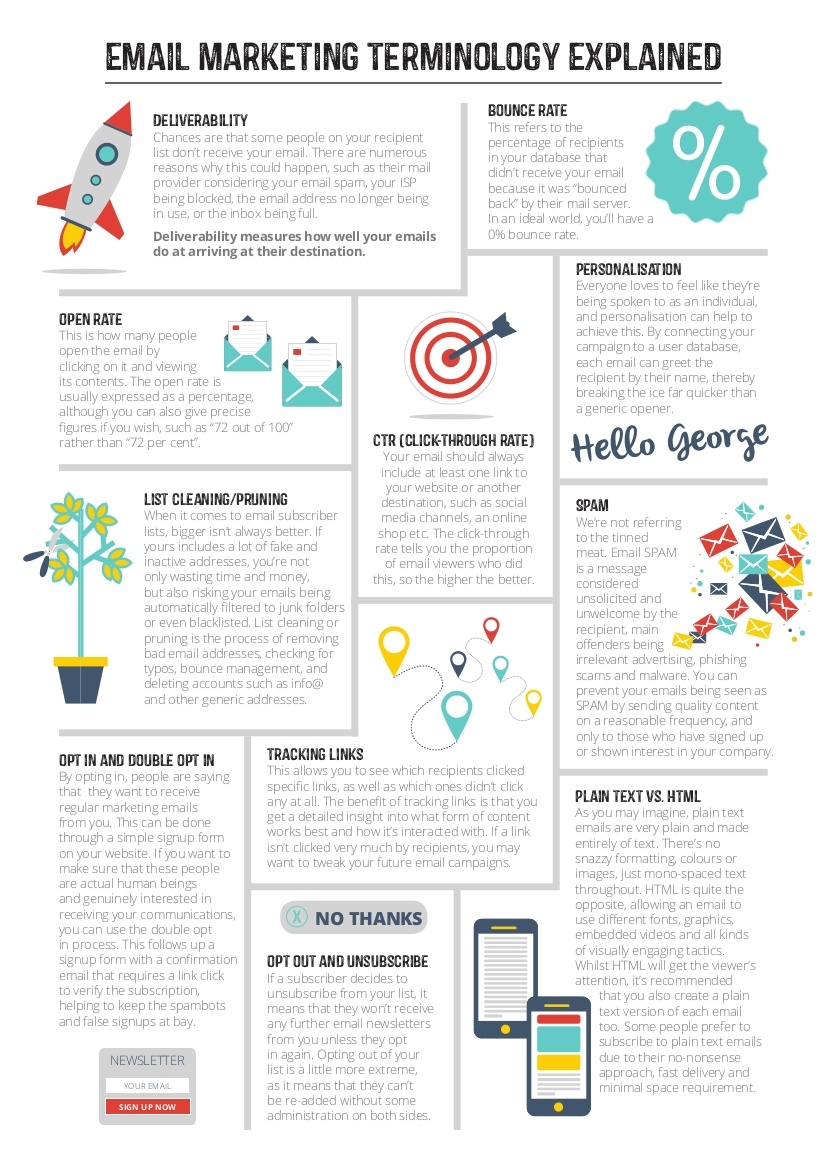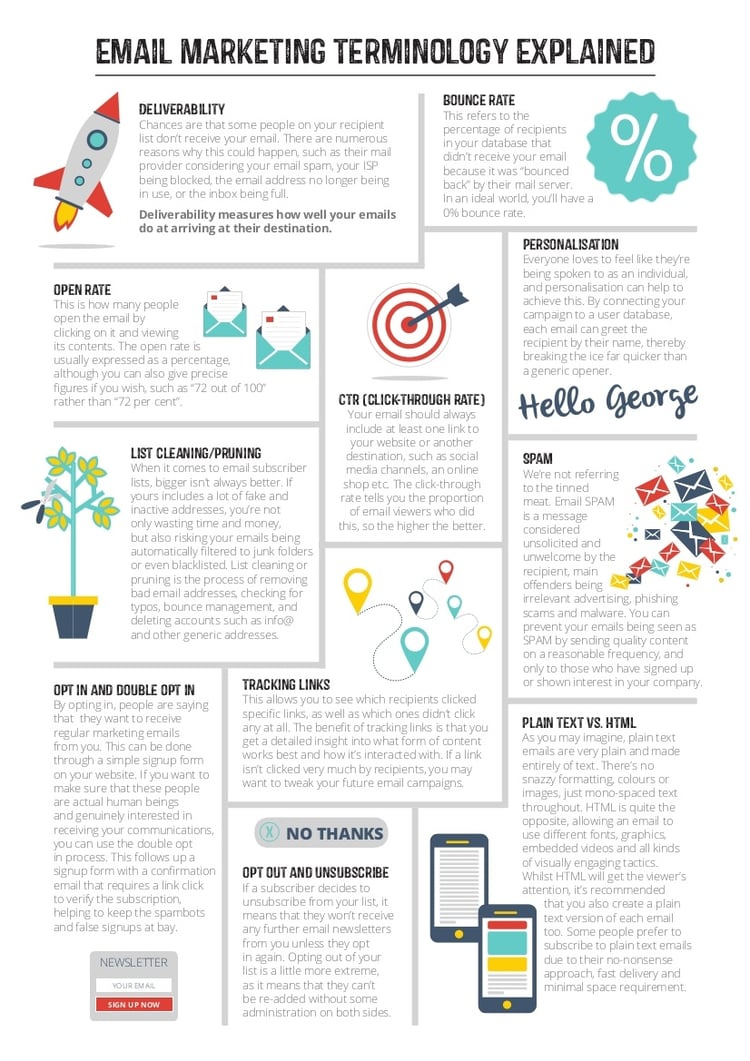Email Marketing Terminology Explained

You know what emails are; they land in your inbox presenting inappropriate services, unwanted pharmaceuticals, and your right to a hefty inheritance following the demise of a relative you never knew you had. They’re also an integral part of an effective marketing strategy, directly conveying key messages and clear calls to action to targeted individuals.
When done properly, email marketing can turn leads into sales, lapsed customers into active advocates, and a few quid into a return on investment that far exceeds that of your printed materials, press coverage and outdoor advertising combined.
But what do all the words mean? Terms like “open rate” can seem vague whilst “bounce rate” may be a mystery altogether, preventing you from fully understanding just how well your email campaign is performing. The following guide should clear things up, not to mention make you a pro at reporting results to colleagues in an effective way.
Deliverability
Chances are that some people on your recipient list don’t receive your email. There are numerous reasons why this could happen, such as their mail provider considering your email spam, your ISP being blocked, the email address no longer being in use, or the inbox being full. Deliverability measures how well your emails do at arriving at their destination.
Bounce rate
This refers to the percentage of recipients in your database that didn’t receive your email because it was “bounced back” by their mail server. In an ideal world, you’ll have a 0% bounce rate.
Open rate
This is how many people open the email by clicking on it and viewing its contents. The open rate is usually expressed as a percentage, although you can also give precise figures if you wish, such as “72 out of 100” rather than “72 per cent”.
CTR (click-through rate)
Your email should always include at least one link to your website or another destination, such as social media channels, an online shop etc. The click-through rate tells you the proportion of email viewers who did this, so the higher the better.
Personalisation
Everyone loves to feel like they’re being spoken to as an individual, and personalisation can help to achieve this. By connecting your campaign to a user database, each email can greet the recipient by their name, thereby breaking the ice far quicker than a generic opener.
List cleaning/pruning
When it comes to email subscriber lists, bigger isn’t always better. If yours includes a lot of fake and inactive addresses, you’re not only wasting time and money, but also risking your emails being automatically filtered to junk folders or even blacklisted. List cleaning or pruning is the process of removing bad email addresses, checking for typos, bounce management, and deleting accounts such as info@ and other generic addresses.
SPAM
We’re not referring to the tinned meat. Email SPAM is a message considered unsolicited and unwelcome by the recipient, main offenders being irrelevant advertising, phishing scams and malware. You can prevent your emails being seen as SPAM by sending quality content on a reasonable frequency, and only to those who have signed up or shown interest in your company.
Opt in and double opt in
By opting in, people are saying that they want to receive regular marketing emails from you. This can be done through a simple signup form on your website. If you want to make sure that these people are actual human beings and genuinely interested in receiving your communications, you can use the double opt in process. This follows up a signup form with a confirmation email that requires a link click to verify the subscription, helping to keep the spambots and false signups at bay.
Opt out and unsubscribe
If a subscriber decides to unsubscribe from your list, it means that they won’t receive any further email newsletters from you unless they opt in again. Opting out of your list is a little more extreme, as it means that they can’t be re-added without some administration on both sides.
Plain text vs. HTML
As you may imagine, plain text emails are very plain and made entirely of text. There’s no snazzy formatting, colours or images, just mono-spaced text throughout. HTML is quite the opposite, allowing an email to use different fonts, graphics, embedded videos and all kinds of visually engaging tactics. Whilst HTML will get the viewer’s attention, it’s recommended that you also create a plain text version of each email too. Some people prefer to subscribe to plain text emails due to their no-nonsense approach, fast delivery and minimal space requirement.
Tracking links
This allows you to see which recipients clicked specific links, as well as which ones didn’t click any at all. The benefit of tracking links is that you get a detailed insight into what form of content works best and how it’s interacted with. If a link isn’t clicked very much by recipients, you may want to tweak your future email campaigns.
